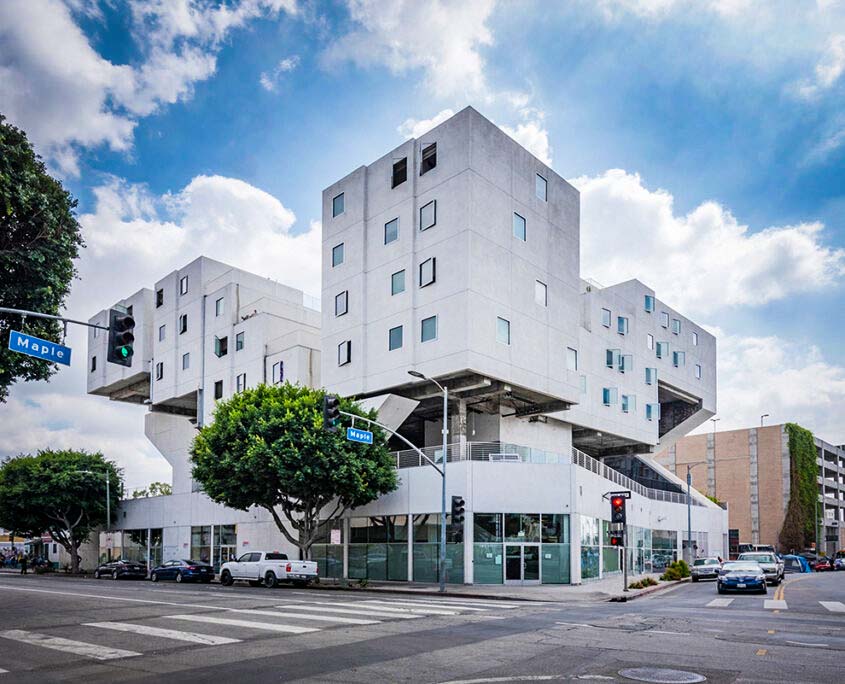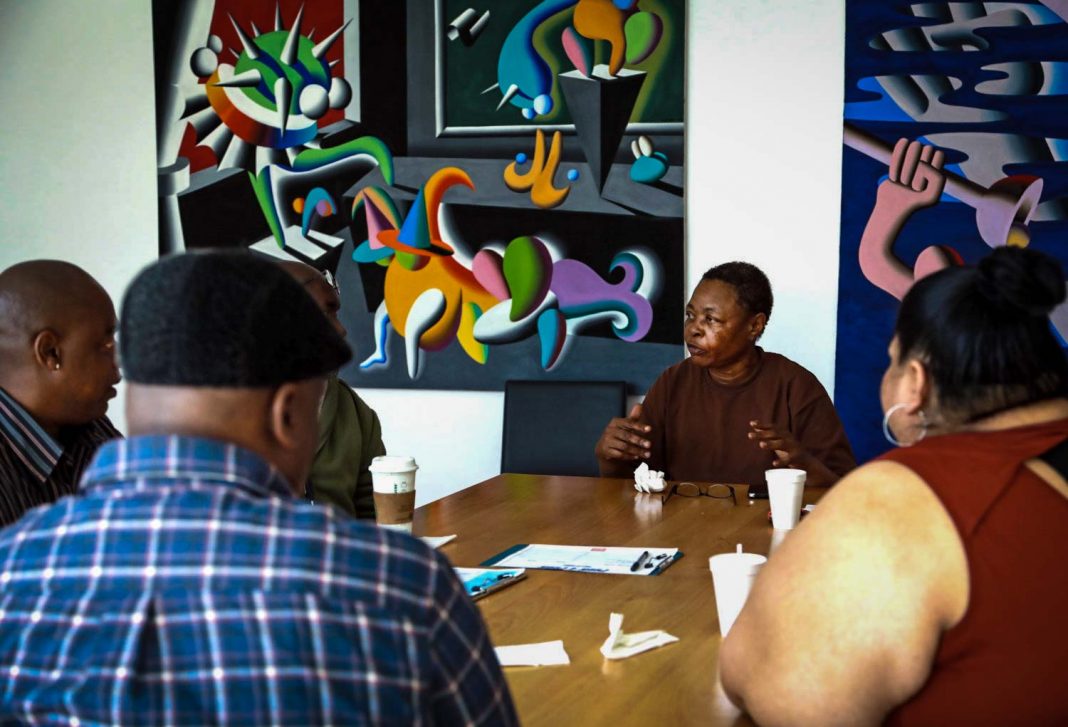We need to provide housing for everyone in our cities, including the most vulnerable groups. Doing so encourages social cohesion, promotes wellbeing, and ultimately makes our cities better places. The question is: how can we create housing for vulnerable groups? And what aspects do we need to factor in? Sierra Atilano from the Skid Row Housing Trust provided us with answers.
Okay, hold on a second. What exactly are vulnerable groups even? The term itself is multifaceted, and there is no one definition. In relation to housing, the term broadly refers to social groups that are:
- suffering from homelessness,
- at risk of becoming homeless,
- confronted with inadequate housing conditions.
Vulnerable groups could include disabled individuals, immigrants, the elderly, veterans, unemployed people, and those surviving on low incomes. Creating adequate housing for these groups is not an easy task and requires a lot of expertise. That’s why we got Sierra Atilano, an expert from the Skid Row Housing Trust, on board.
Trust in the Trust
The Skid Row Housing Trust is based in Los Angeles where it provides permanent supportive housing for those without a home. The Trust was founded in 1989 by a bunch of community activists and business leaders who started buying old hotels and renovating them for vulnerable groups.
Nowadays, the Trust builds highly modern, stylish buildings. Most of them are located in Skid Row, an area of roughly 50 blocks east of downtown Los Angeles, known for its high percentage of unemployed, homeless, and marginalised people.
Sierra Atilano is the Trust’s Chief Real Estate and Investment Officer and has over 20 years of experience in working in the housing sector. She tells us what goes into creating housing for vulnerable groups and what to watch out for.

Sierra’s Key Tips
According to Sierra, there are five main aspects to consider when wanting to house those in need:
1. Make It Permanent
Providing permanent housing for vulnerable groups is key. Residents should be able to stay in their flats for as long as they want and not have to fear ending up on the streets again. Why? It is only by guaranteeing permanent housing, Sierra tells us, that you can break the cycle of homelessness and provide people with stability. And she adds: “I think that it’s inhumane to ask people to live on the streets, or to live without housing, no different than it would be to live without air, to live without food, or to live without water”.
2. Provide Support
However, Sierra stresses:
“It’s not as simple as handing somebody the keys and saying, ‘here you need to fend for yourself’.”
Most people applying to live in Trust housing have been through rough times. Some have been chronically homeless (i.e., have repeatedly found themselves without a roof over their heads), ill, or are traumatised from past experiences. In fact, Sierra mentions that 75% of their applicants suffer from some form of PTSD. Therefore, many residents require support to get them back on track. That’s why the Trust offers a wide range of on-site services. Residents can join support groups, they receive help with financial matters, and they can get medical advice in clinics integrated into the buildings. All services are offered for free and – as they are on-site – easily accessible.
However, nobody is forced to make use of the services provided. All of it is optional. Sierra highlights: “Not everybody needs it. We’ve had many people come through our doors that don’t need it and are able to survive. They just simply need housing at that particular time”. Sierra’s words mirror the Trust’s philosophy: they believe that once people are housed, they will find their “unique and distinct path to wellness and wellbeing”.
The lesson we learn from the Trust’s approach is that you need to consider the needs of vulnerable groups and provide support where needed (and wanted!).
3. Build a Community
Apart from helping residents recover individually, however, you should also bring people together and create a thriving community.
The Trust, for instance, hosts field trips, plans gatherings (e.g., Christmas parties), sets up gardening groups, and organises yoga classes. Community meetings also take place regularly in the buildings. There, residents can learn about upcoming events and projects or simply chat with their neighbours. All of this contributes to creating a strong community within the building. It shows residents that they are not alone in their struggle and that there is a large, supportive network they can rely on. But most importantly, the community turns the building into a proper home.
4. Team Up
You might wonder: how does the Trust manage to do all of this? The answer: partnerships! According to Sierra, it takes a lot of partnerships from various sources. You’ll need partners that help provide the on-site services such as case managers, counsellors, psychiatrists, or volunteers. But you’ll also need partners for the design and construction of the housing. You’ll need financial support, and you’ll certainly need other non-profits lending you a hand.
5. Focus on Design
Lastly, it’s not just about providing residents with permanent supportive housing, building a thriving community, and having the right partners to be able to do so. It’s also about the building itself.
Newer buildings erected by the Trust, like The Six or Star Apartments, look like high-value, futuristic mansions. Quite the opposite of what you would expect from housing for vulnerable groups. But the Trust has its reasons for focussing on design excellence. According to Sierra, the residents of both the building itself and the neighbourhood in general benefit from great design.

Pros for Residents
Sierra stresses that beautiful spaces promote the healing of residents by making them feel appreciated in society: “We really just do care about how a person feels when they walk in the building.” From the lobby to the view residents enjoy out of their windows – everything is carefully planned and designed. The Trust also pays a lot of attention to incorporating greenery and art into its buildings as well as providing community spaces. All of this helps residents recover and makes them feel valued.
Pros for the Neighbourhood
However, making housing for vulnerable groups beautiful does not only benefit them personally. The whole neighbourhood can thrive. Making the building stand out will turn it (and the surrounding area) into a place that’s spoken of or reported on, or even celebrated with design awards. This can also increase property values in the area.
Sadly, these benefits are only recognised by a few. According to Sierra, a lot of residents in the city have a NIMBY (Not in My Backyard) attitude towards housing for vulnerable groups. She elaborates:
“As developers, especially permanent supportive housing developers, we get this pushback approach constantly from neighbourhoods that we want to build in. And even though they see neighbours unhoused in their neighbourhood, they don’t want a building that represents homelessness, or represents affordable housing within their neighbourhood.”
By making buildings real pieces of art, you can show that housing for vulnerable groups isn’t something to be ashamed of but that it can uplift entire communities.
To learn more about the Trust’s focus on design excellence and the impact it has, check out this video:
How to Create Housing for Vulnerable Groups in a Nutshell
When wanting to house those in need, there are a couple of things to look out for:
- Provide permanent housing.
- Offer support services to help residents recover.
- Bring people together and create a community.
- Find partners that will help you realise your project.
- Focus on design excellence and reap the benefits.
Lastly, also beware that when creating housing for vulnerable groups, you will face numerous challenges.
Now that you know how to help those in need, let’s get cracking and prove that housing for vulnerable groups is something we do want in our backyards – and in fact, all across our cities!


